The new features of this release include:
When registering an account, a user only needs to enter an Email address, get the verification code, create a passeord and confirm the password. Other information such as phone number and company address can be added in the Account page after login.

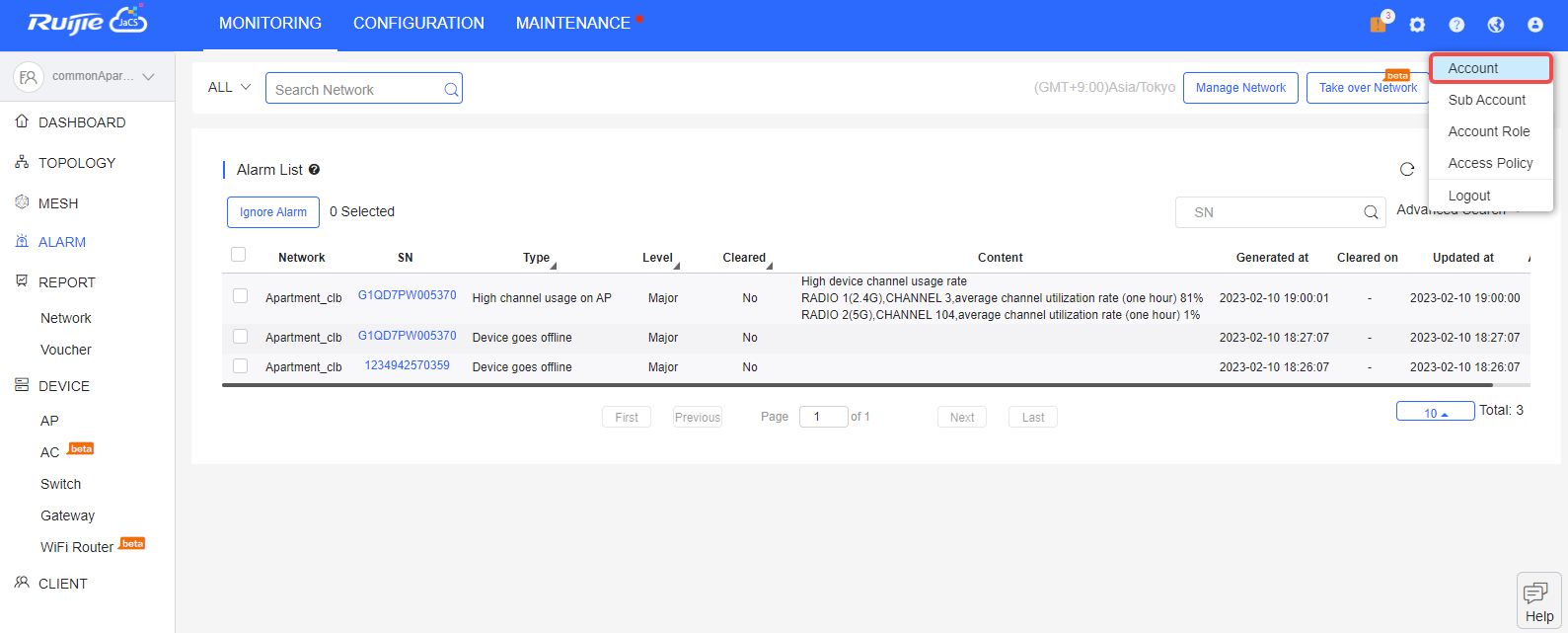
After clicking the Trial Account, guests can experience the operations of the system under the gudie without registering accounts.
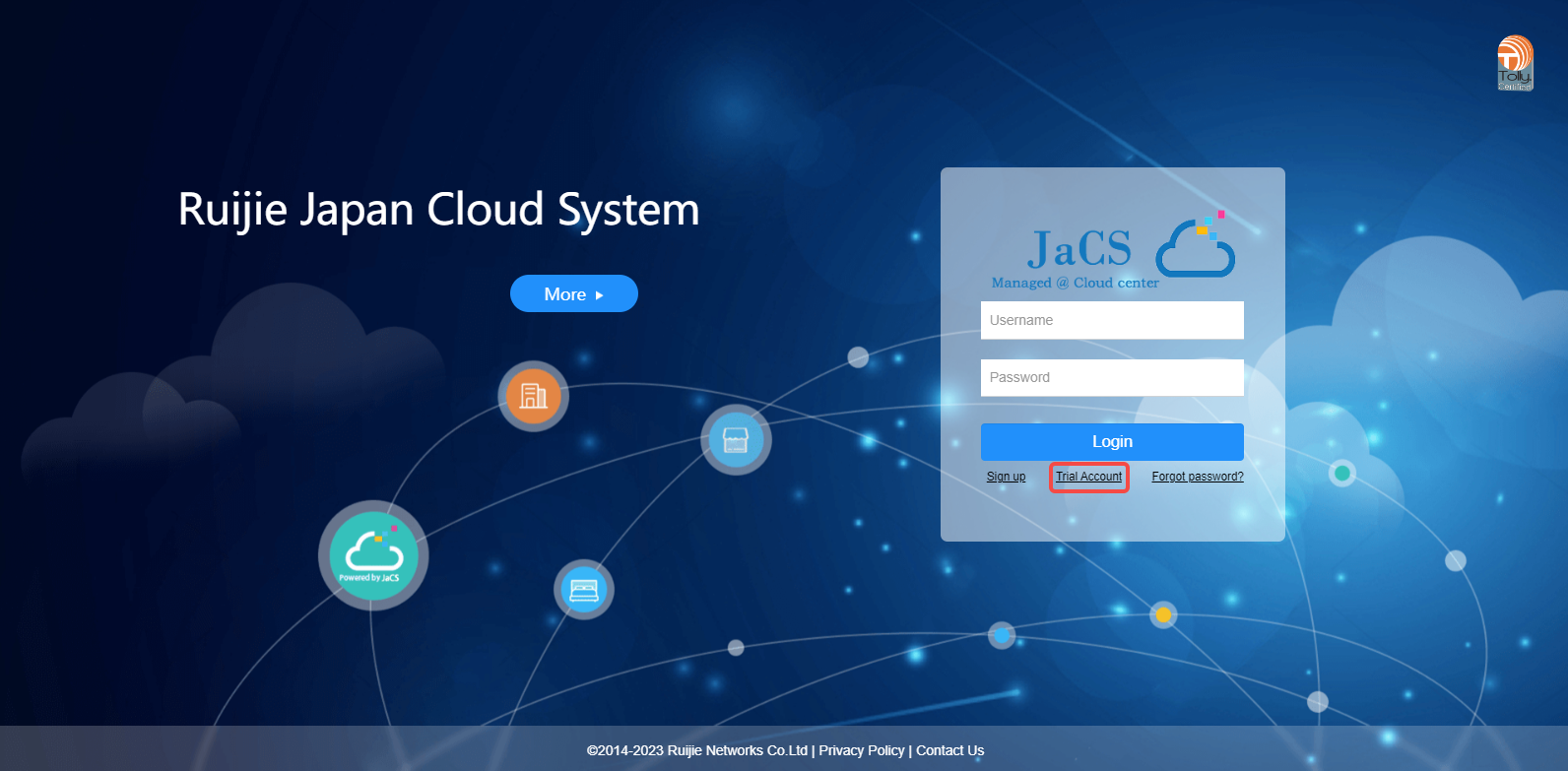
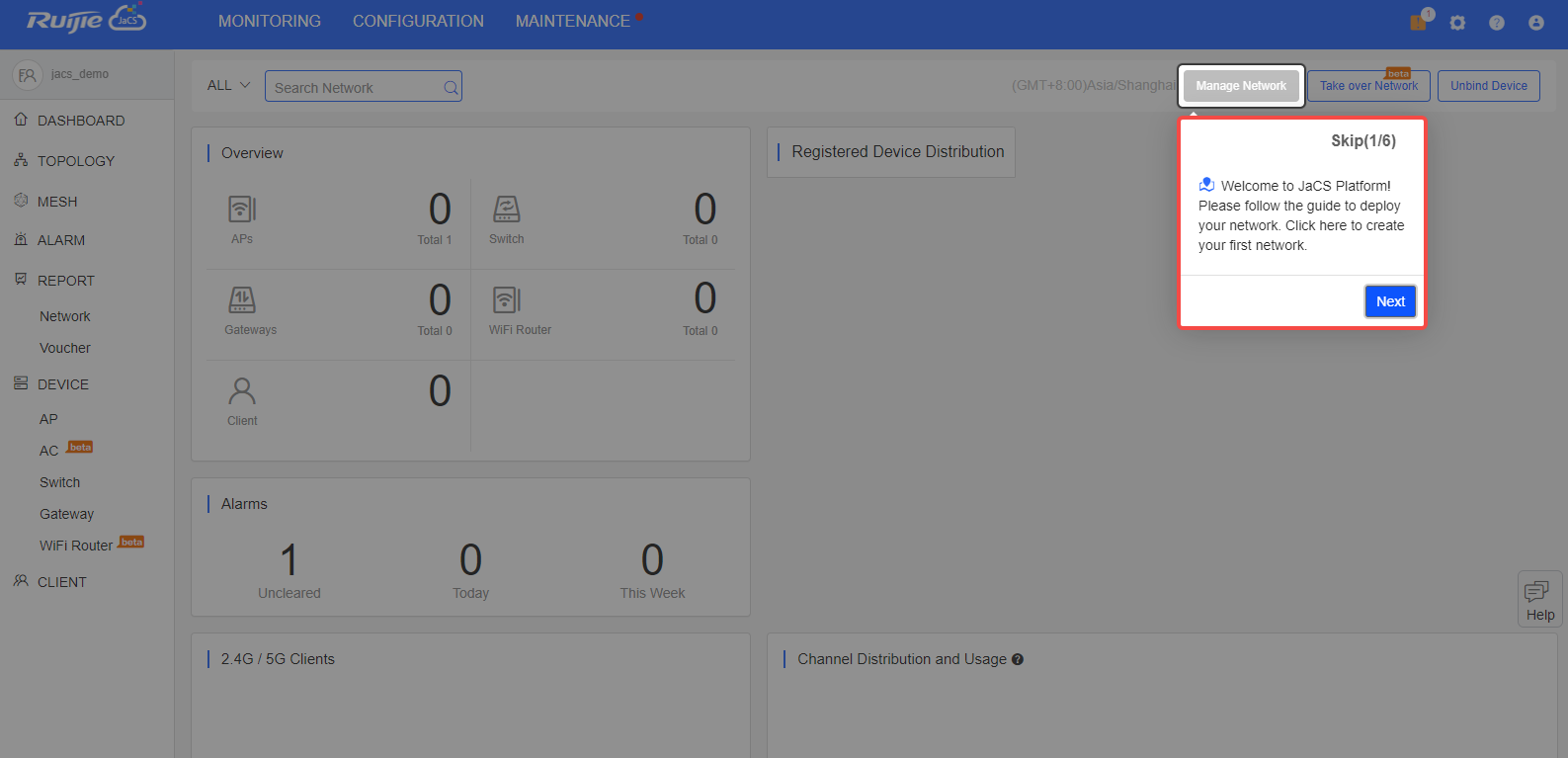
The algorithm of uprading device has been improved, so that the devices can be scheduled to be upgraded in batches in the specified minutes of a day.
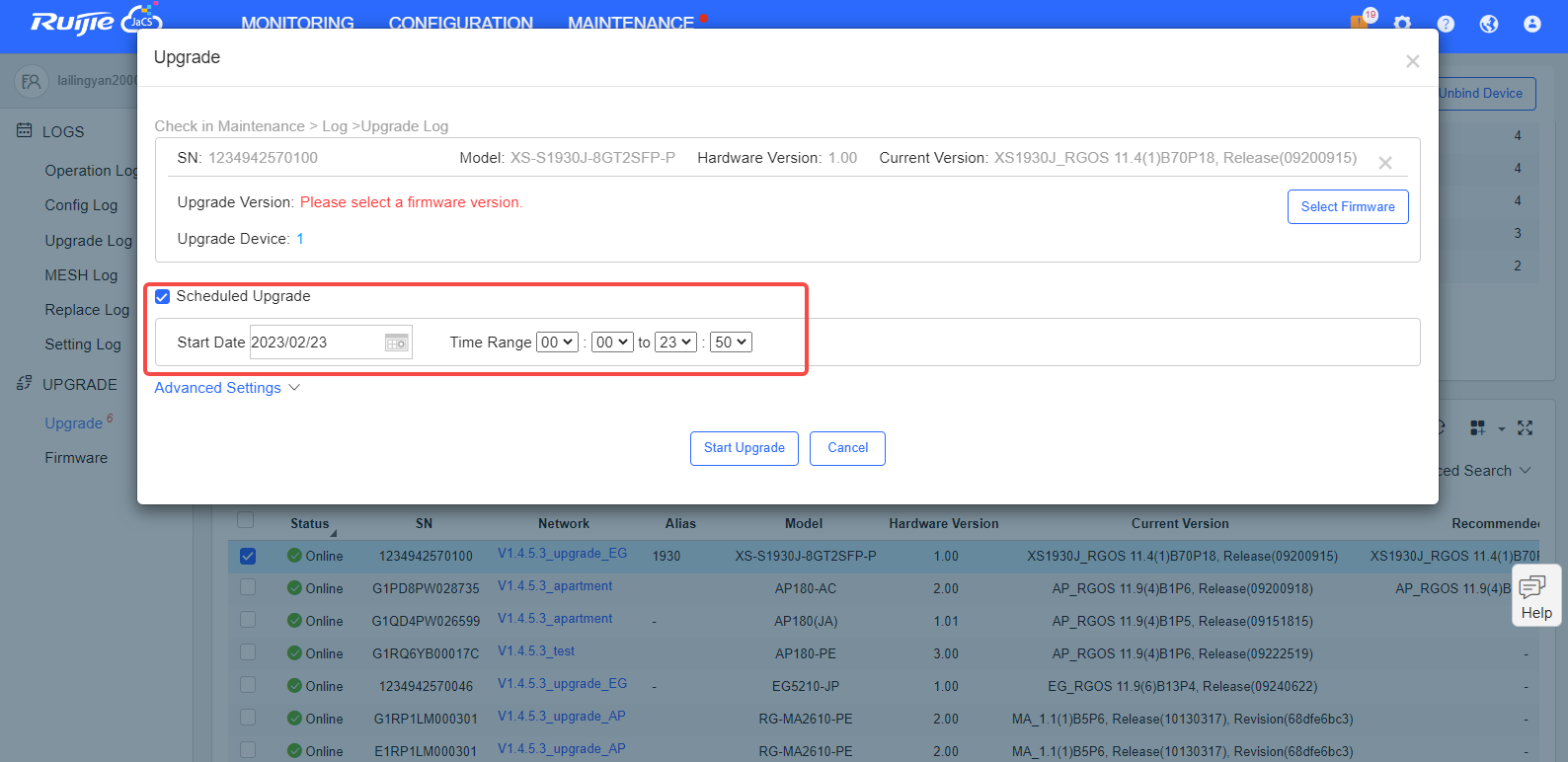
Users can click the Help icon to give feedbacks on the problems they meet and offer suggestions to us.
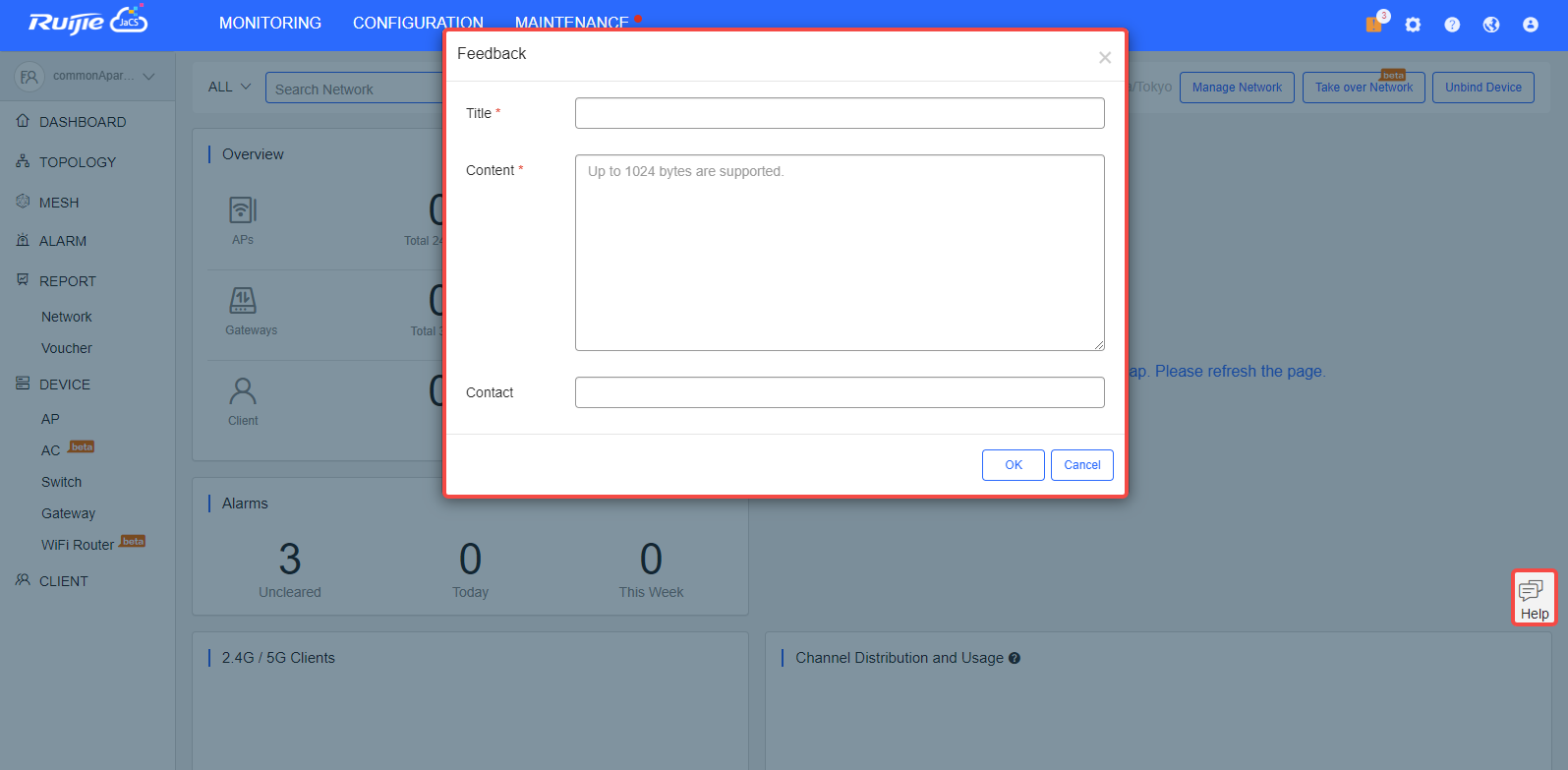
Users can run CLI commands in the Configuration > Basic > Advanced Settings page to deliver the configurations to the device in the Apartment scenario.
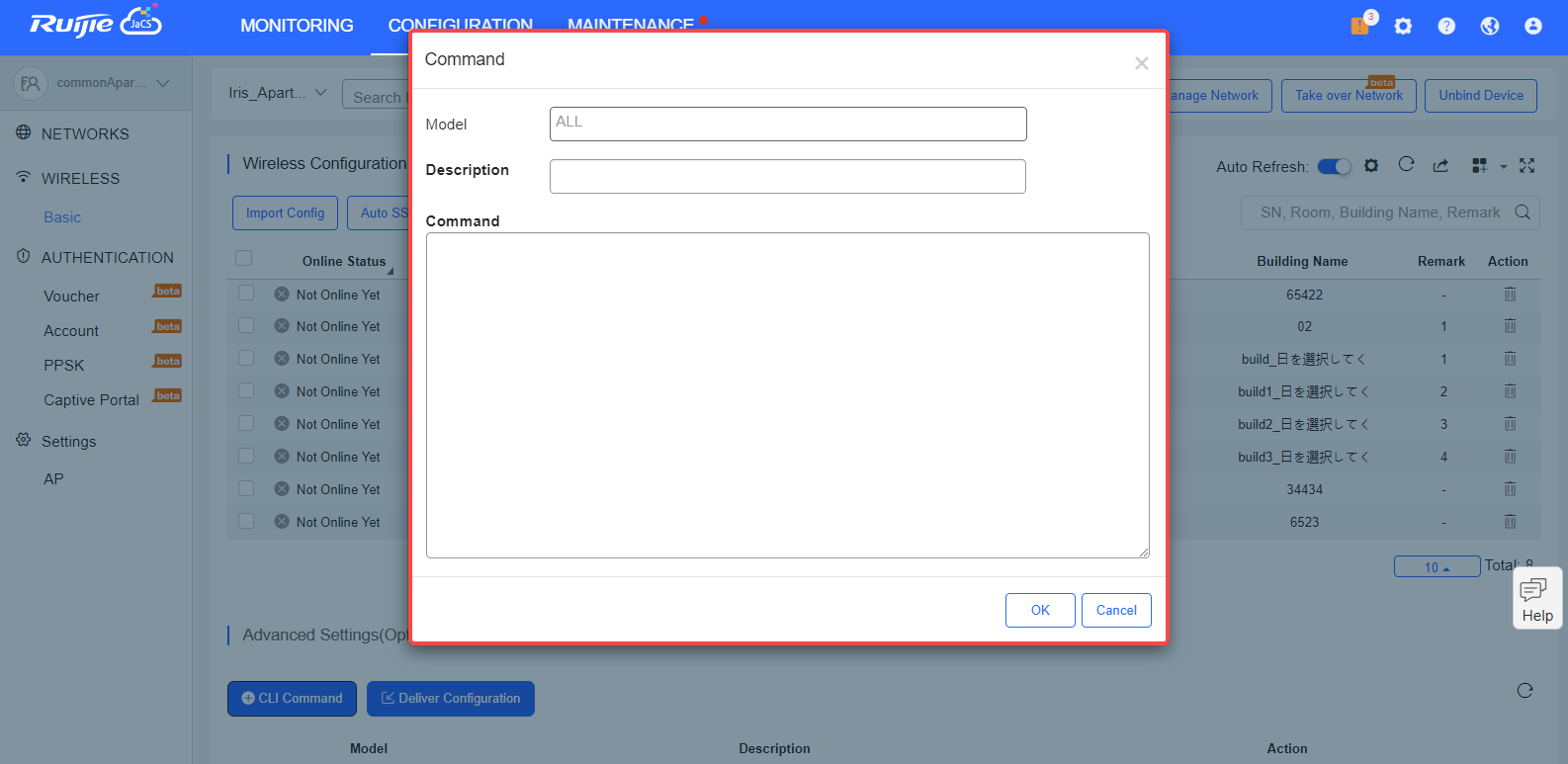
The text color of the menu on the left darkened.
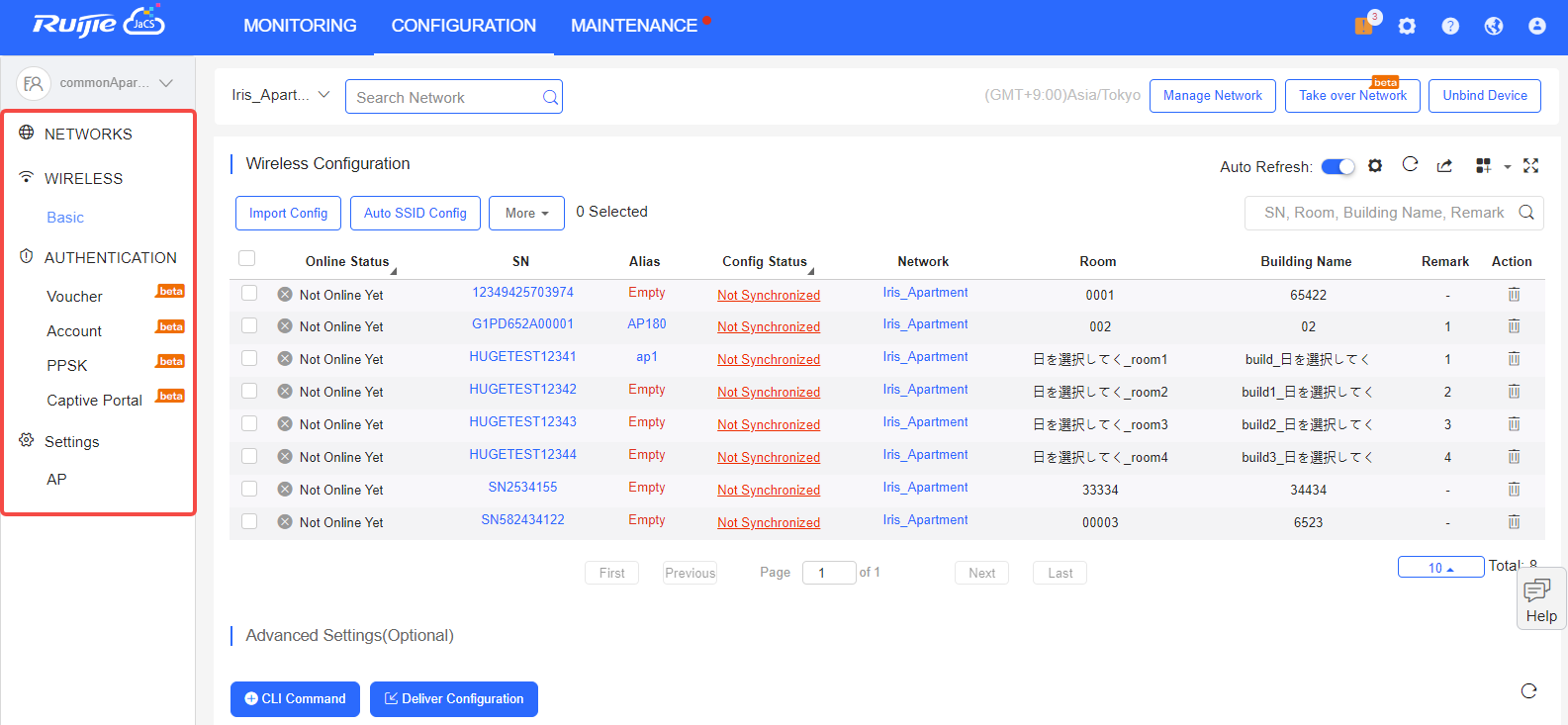
No. | Bug Description |
1 | When the system language was Japanese, a user exported the Wi-Fi traffic summary in CSV file format in the MONITORING > REPORT > Network > Summary page. The file was garbled when the user opened it with Excel. |
2 | If a password containing valid special characters was used for registration, the registration was complete but the system prompted that it failed. |
No. | Module | Description |
1 | Device | Up to 200 devices can be imported each time. To import more than 300 devices, users need to do it in batches. |
2 | Configuration | Configurations of up to 200 devices can be imported each time. To import configurations of over 200 devices, users need to do it in batches. |
3 | EXCEL template | For Excel template, only the XLS format is supported. |
4 | SSID | SSIDs can be made up of numbers, English letters, and “-“. |
5 | Custom excel template | In an Excel customized template, A to Z columns and 1 to 15 rows are supported. |
6 | AP | Account-based policies may fail on some models, such as AP680(CD), where they are disabled by default. In this case, users need to batch apply from the Cloud the web-auth acct-update-interval 1 command to enable those policies. |
7 | SSID reverse sync | The Cloud does not support SSIDs containing special characters. If set on end devices, such SSIDs will fail to be delivered, after synchronization, by the Could. |
8 | 00000JAPAN Wi-Fi | In the Apartment Scenario, if the device goes offline after 00000JAPAN Wi-Fi is enabled, and then goes online after 00000JAPAN Wi-Fi disabled, Cloud will not re-configure the Wi-Fi settings on device. You need to clear 00000JAPAN Wi-Fi configuration manually. |
9 | AP | In Non-apartment Scenario, please clear the configuration on devices except AP180 before bring them online; otherwise, the configuration on devices may be conflict with that on Cloud, and the client may not be able to access the Internet. |
10 | AP | In Non-apartment Scenario, if the working mode (bridge mode or routing mode) of AP180 is different from that on Cloud, the client may not be able to access the Internet. |
11 | TOPOLOGY |
|
12 | TOPOLOGY | The uplink ports of some switches cannot be shielded in the topology as the Cloud fails to identify them. Included: XS-S1930J-8GT2SFP, XS-S1930J-8GT2SFP-P XS-S1930J-18GT2SFP, XS-S1930J-18GT2SFP-P XS-S1930J-24GT4SFP/2GT, XS-S1930J-24GT4SFP/2GT-P XS-S1930J-48GT4SFP |
13 | Initial Configuration Template | The template can only be applied to AP180 series access points in Apartment networks. |
14 | CLI Commands | Only for AP and CAP series products. |
全部评论